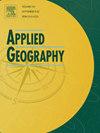从地方视角探索中国粮食安全的演变
IF 4
2区 地球科学
Q1 GEOGRAPHY
引用次数: 0
摘要
地方粮食自给自足是弥补粮食系统全球化造成的供应链依赖的可行路径。然而,尽管政策倡导粮食本土化,但中国当前粮食供给与营养需求失衡、生产空间与消费空间错配等趋势,逐渐制约了粮食安全的可持续性。本研究围绕供给、获取、需求等多维度,分析了 2000-2020 年中国地方粮食安全状况。结果表明,中国主粮自给率的区域分化更加显著。因此,快速城市化地区的粮食供给能力减弱,山区和欠发达地区难以实现自给自足。值得庆幸的是,中国主食的可获得性很高,人口在 5 万以下的城市粮食运输保障能力最强。总的来说,老龄化和规模化管理对中国的粮食系统影响很大,目前中国的粮食系统能够抵御突如其来的自然灾害。未来,决策者应注重城市资源整合和农村土地整理,以科普和健康饮食结构为基础,通过中央规划优化地方供需结构,实现粮食系统的可持续转型。本文章由计算机程序翻译,如有差异,请以英文原文为准。
Exploring China's food security evolution from a local perspective
Local food self-sufficiency is a feasible path to make up for supply chain dependence caused by food system globalization. However, despite policies advocating food localization, China's current trends, such as the imbalance between food supply and nutritional demand and the mismatch between production space and consumption space, gradually restrict the sustainability of food security. This study analyzes China's local food security from 2000 to 2020 around the multi-dimensionality of supply, acquisition, and demand. Results show that regional differentiation of China's staple food self-sufficiency has become more significant. As a result, food supply capacity in rapidly urbanizing areas has weakened, and mountainous and underdeveloped areas are difficult to be self-sufficient. Fortunately, staple foods in China are highly accessible, and urban with a population of less than 50,000 have the best food transportation security. Overall, aging and scale management greatly affect China's food system, which currently can resist sudden natural disasters. In the future, decision-makers should focus on urban resources integration and rural land consolidation and realize sustainable food system transition by optimizing the local supply-demand structure through central planning based on popular science and healthy diet structure.
求助全文
通过发布文献求助,成功后即可免费获取论文全文。
去求助
来源期刊

Applied Geography
GEOGRAPHY-
CiteScore
8.00
自引率
2.00%
发文量
134
期刊介绍:
Applied Geography is a journal devoted to the publication of research which utilizes geographic approaches (human, physical, nature-society and GIScience) to resolve human problems that have a spatial dimension. These problems may be related to the assessment, management and allocation of the world physical and/or human resources. The underlying rationale of the journal is that only through a clear understanding of the relevant societal, physical, and coupled natural-humans systems can we resolve such problems. Papers are invited on any theme involving the application of geographical theory and methodology in the resolution of human problems.
 求助内容:
求助内容: 应助结果提醒方式:
应助结果提醒方式:


